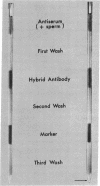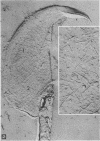Abstract
H-Y (male) antigen was visually located on mouse sperm by electron microscopy, by use of the indirect hybrid antibody method and tobacco mosaic virus as the visual marker. Labeling was achieved by centrifugation of the sperm through a discontinuous gradient consisting of alternating layers of immune reagents and wash solutions. Treated sperm were examined topographically by preparation of platinum-carbon replicas. Antigen was located mainly on the acrosomal cap of the sperm head.
Keywords: hybrid antibodies, tobacco mosaic virus, gradient centrifugation, replicas
Full text
PDF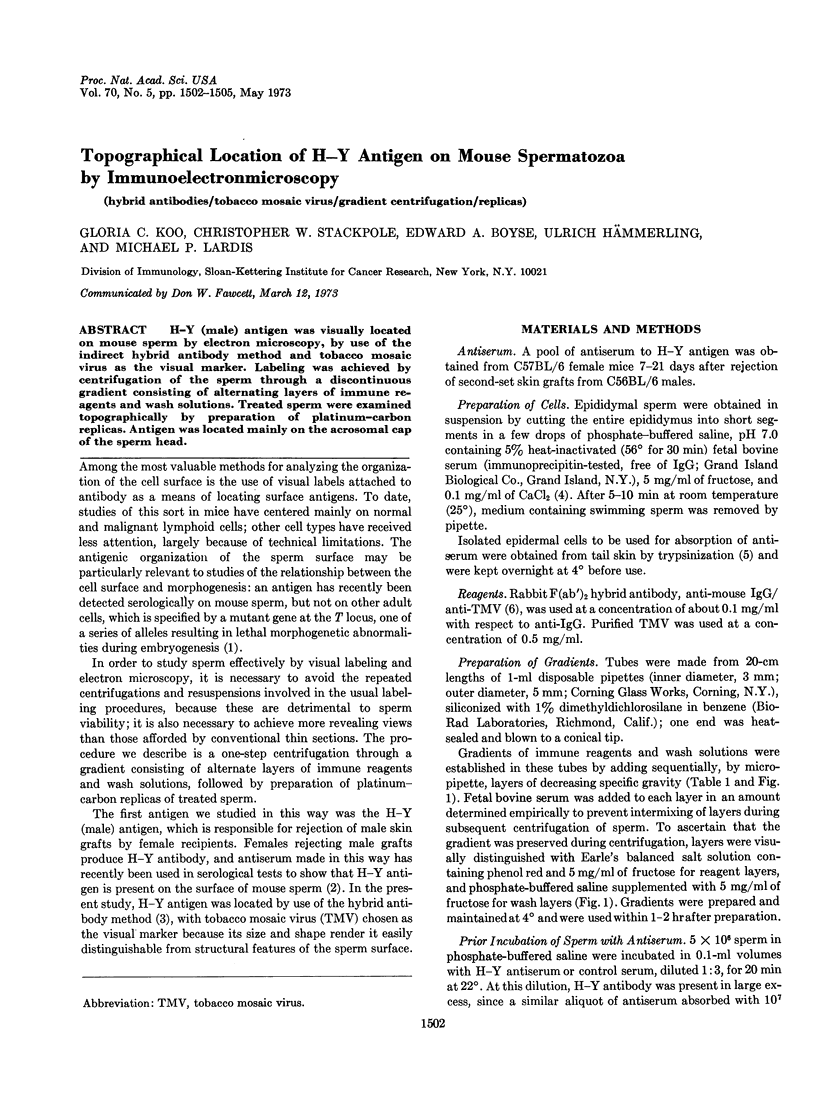
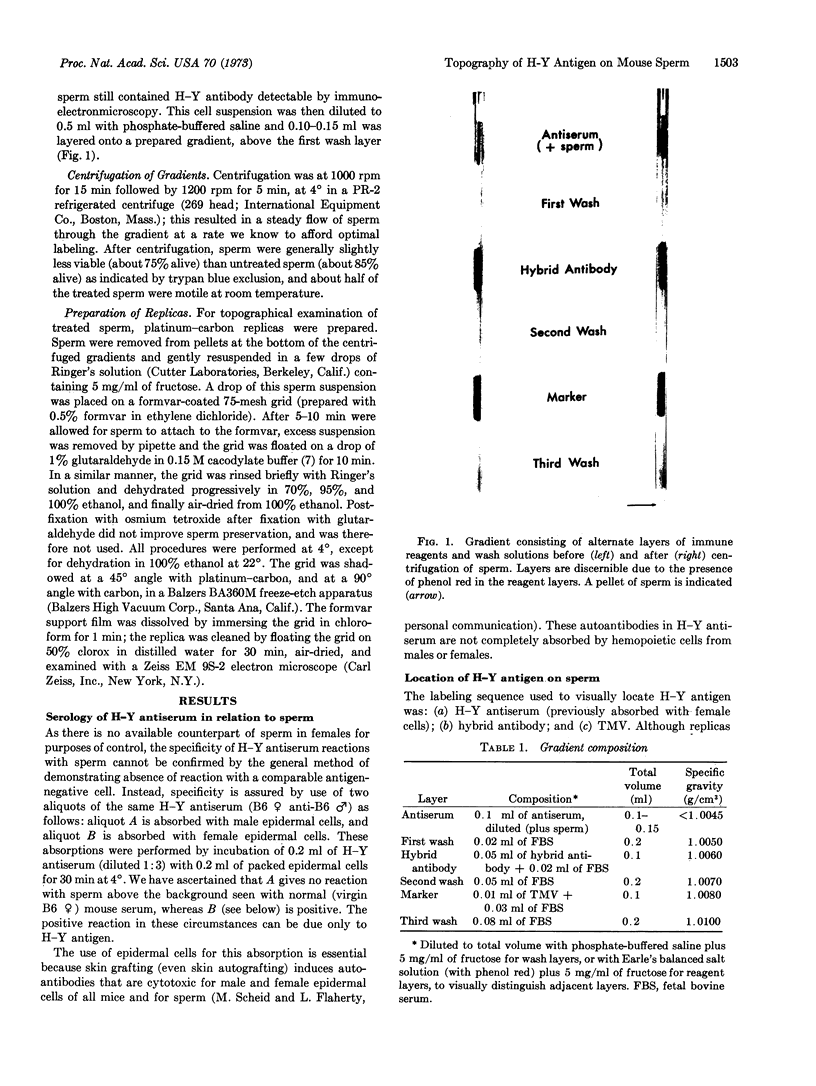
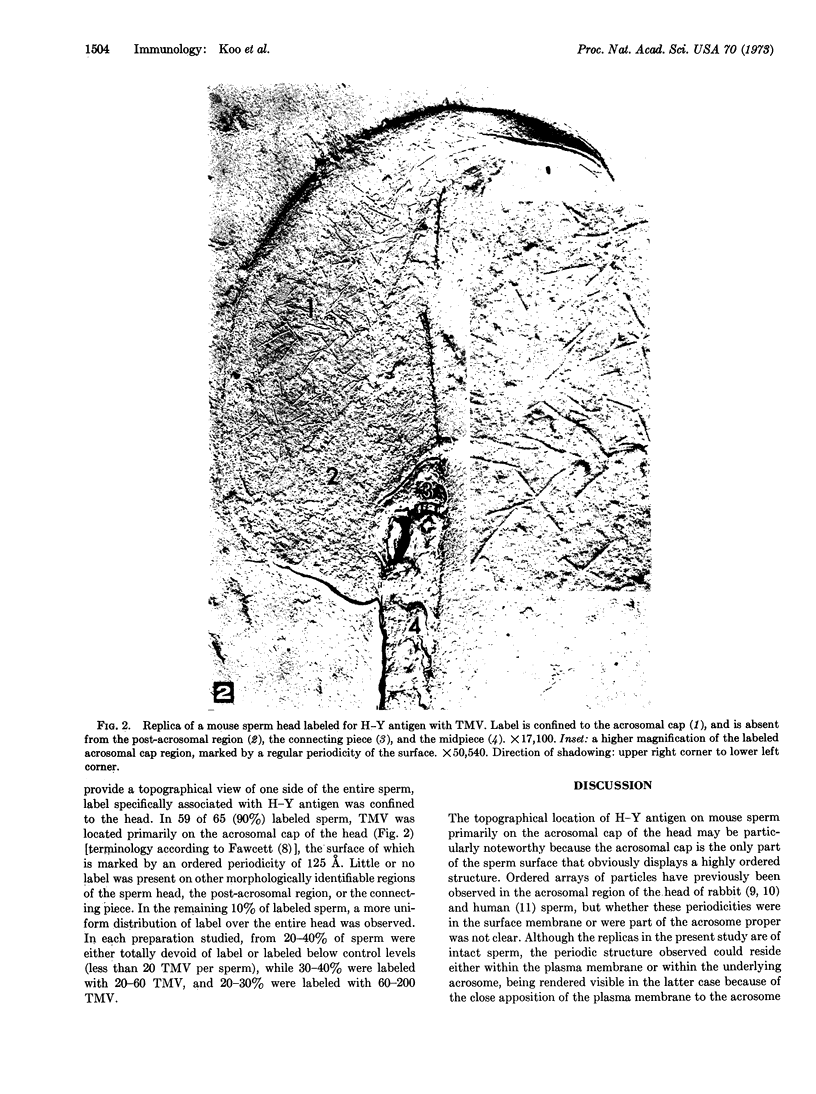
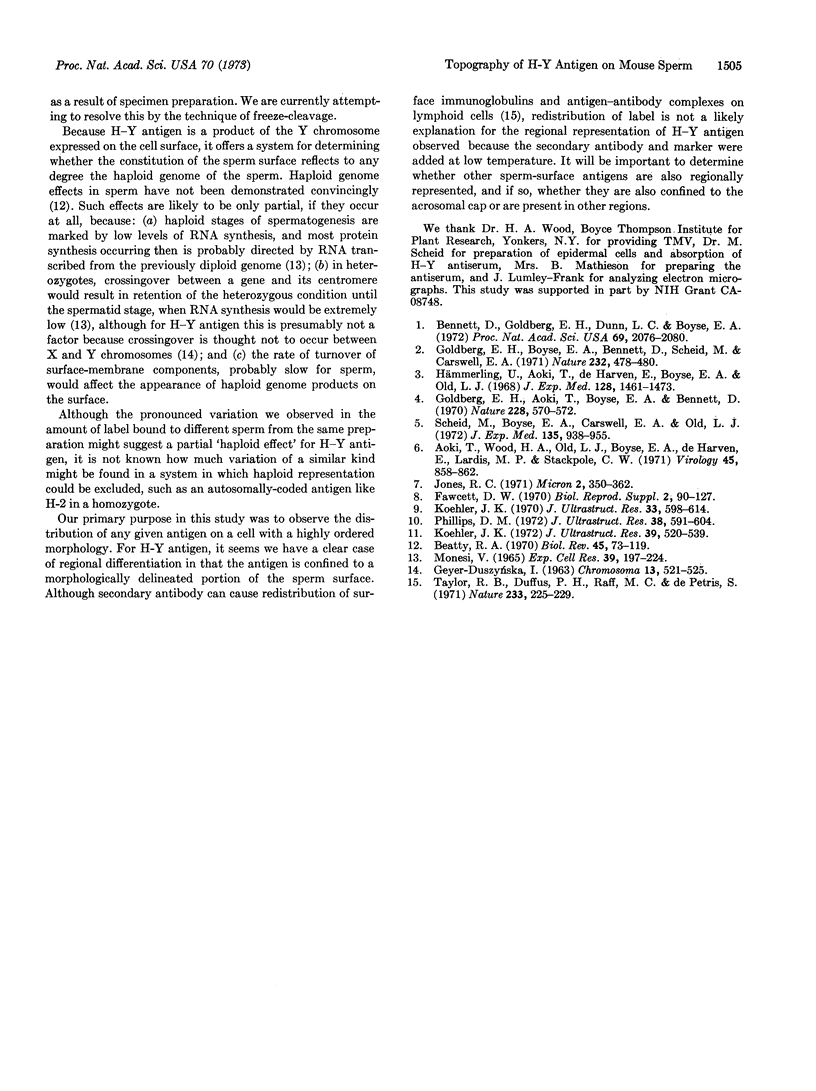
Images in this article
Selected References
These references are in PubMed. This may not be the complete list of references from this article.
- Aoki T., Wood H. A., Old L. J., Boyse E. A., De Harven E., Lardis M. P., Stackpole C. W. Another visual marker of antibody for electron microscopy. Virology. 1971 Sep;45(3):858–862. doi: 10.1016/0042-6822(71)90214-5. [DOI] [PubMed] [Google Scholar]
- Beatty R. A. The genetics of the mammalian gamete. Biol Rev Camb Philos Soc. 1970 Feb;45(1):73–119. doi: 10.1111/j.1469-185x.1970.tb01076.x. [DOI] [PubMed] [Google Scholar]
- Bennett D., Goldberg E., Dunn L. C., Boyse E. A. Serological detection of a cell-surface antigen specified by the T (brachyury) mutant gene in the house mouse. Proc Natl Acad Sci U S A. 1972 Aug;69(8):2076–2080. doi: 10.1073/pnas.69.8.2076. [DOI] [PMC free article] [PubMed] [Google Scholar]
- Fawcett D. W. A comparative view of sperm ultrastructure. Biol Reprod Suppl. 1970;2:90–127. [PubMed] [Google Scholar]
- GEYER-DUSZYNSKA I. On the structure of the XY bivalent in Mus musculus L. Chromosoma. 1963;13:521–525. doi: 10.1007/BF00321161. [DOI] [PubMed] [Google Scholar]
- Goldberg E. H., Aoki T., Boyse E. A., Bennett D. Detection of H-2 antigens on mouse spermatozoa by the cytotoxicity test. Nature. 1970 Nov 7;228(5271):570–572. doi: 10.1038/228570a0. [DOI] [PubMed] [Google Scholar]
- Goldberg E. H., Boyse E. A., Bennett D., Scheid M., Carswell E. A. Serological demonstration of H-Y (male) antigen on mouse sperm. Nature. 1971 Aug 13;232(5311):478–480. doi: 10.1038/232478a0. [DOI] [PubMed] [Google Scholar]
- Hämmerling U., Aoki T., de Harven E., Boyse E. A., Old L. J. Use of hybrid antibody with anti-gamma-G and anti-ferritin specificities in locating cell surface antigens by electron microscopy. J Exp Med. 1968 Dec 1;128(6):1461–1473. doi: 10.1084/jem.128.6.1461. [DOI] [PMC free article] [PubMed] [Google Scholar]
- Koehler J. K. A freeze-etching study of rabbit spermatozoa with particular reference to head structures. J Ultrastruct Res. 1970 Dec;33(5):598–614. doi: 10.1016/s0022-5320(70)90184-x. [DOI] [PubMed] [Google Scholar]
- Koehler J. K. Human sperm head ultrastructure: a freeze-etching study. J Ultrastruct Res. 1972 Jun;39(5):520–539. doi: 10.1016/s0022-5320(72)90118-9. [DOI] [PubMed] [Google Scholar]
- Monesi V. Synthetic activities during spermatogenesis in the mouse RNA and protein. Exp Cell Res. 1965 Aug;39(1):197–224. doi: 10.1016/0014-4827(65)90023-6. [DOI] [PubMed] [Google Scholar]
- Phillips D. M. Substructure of the mammalian acrosome. J Ultrastruct Res. 1972 Mar;38(5):591–604. doi: 10.1016/0022-5320(72)90092-5. [DOI] [PubMed] [Google Scholar]
- Scheid M., Boyse E. A., Carswell E. A., Old L. J. Serologically demonstrable alloantigens of mouse epidermal cells. J Exp Med. 1972 Apr 1;135(4):938–955. doi: 10.1084/jem.135.4.938. [DOI] [PMC free article] [PubMed] [Google Scholar]



